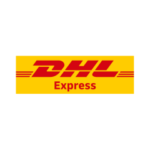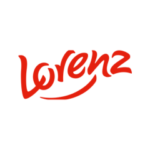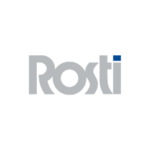Traceability, the genealogy of a product, the possibility to follow it through the manufacturing process, which enables the control of data flow about it. We know that this is a useful functionality which allows us to determine the composition of the product, used in systems that have an impact on the management of raw materials, product batches and BOM structure in solutions such as ERP or MES. We treat it as an engineering, logistics and quality control activity. This is the standard perception of the issue. Below we will show other possible points of view as well.
General principles of traceability
Traceability has been regulated by the WHO, the European Parliament and national legislation. Sometimes, we do not realise how important this issue is and that, according to the provisions of law, adequate procedures and systems supporting this idea should be applied. Traceability, in other words, tracking a specific product or a batch of products at every stage of production, is a procedure widely used in industries that concern our safety, transport, nutrition, hygiene and health. Thanks to traceability functionalities, we are able to access the data from which materials, components or semi-finished products were made. With information from our suppliers, who apply the principles of traceability, we are also able to trace and control which materials were used to make the semi-finished products that are part of the product we are delivered. Furthermore, by having a batch of a consumable or raw material from a given producer, we can determine in which products that batch of material or purchased components was used. We, therefore, have a set of information on the basis of which we can determine the structure of the product in two directions: from top to bottom and from bottom to top.
Traceability: what else does such tracking enable?
Genealogy, thus a kind of manufacturing history, concerns not only the composition of products. In addition, it provides information about the place of manufacture, manufacturing resources, sometimes including the identification of employees involved in the manufacturing process. Furthermore, you can find solutions which ensure the identification of individual batches of products with the parameters in which the process was carried out. It all depends on the type of a system. Properly documented genealogy is the basis for issuing quality certificates or certificates of origin of products. In the age of information technology, obtaining such reports is not a problem. That is why responsible manufacturers try to document the manufacturing method, product composition and process conditions. But that is not all. They require their suppliers to hold such certificates too. So often, we now encounter the practice of audits confronting declarations with actual manufacturing conditions. Without 100% confirmation of this compliance, a supplier may not be awarded a contract. An obvious application of traceability is in the food or pharmaceutical industry, where in the case of a decision to recall a batch of products due to a defective raw material, we can very precisely determine in which other products the batch of raw material was used. Another prime example is the investigation of the causes of traffic accidents, where we can pinpoint exactly why some element failed, causing a tragedy. For example, how many times have we heard about the grounding of certain aircraft for which unreliable components were used…?
Traceability: application across industries and for a different purpose
Let us look at traceability from the perspective of new consumer trends. Let us call it the social view of industry products. So what can traceability provide us with? Information on the origin of products and raw materials.
Consumers all over the world are more and more consciously choosing products that come from specific regions or have appropriate certificates (e.g. food of Polish origin, products from organic farming, fish from certified fisheries, wood from sustainable forest management, etc.). They have a need to identify with what comes into their hands and it is not enough to assure them that the product is of the highest quality. They want reliable information and more control over what they buy and consume. Surveys conducted by ARC Rynek i Opinia show that Poles are becoming more and more conscious consumers. More than half of them (57%) declare that they try to avoid environmentally harmful products. As many as 34% of Polish Internet users are more likely to buy products or services of a brand which is environmentally friendly. Most of them are young people (18–24 years old), i.e. consumers who in a few years will be the dominant group in terms of purchasing power. It is to their requirements that we should adapt now.
Trend: the issue of food safety
This means that manufacturers (not only from the food industry) will have to show where raw materials, consumables and components come from: whether from organic farming or from countries that control and enforce appropriate standards on working conditions (e.g. without using child labour). They will have to indicate whether the product is made of recycled or renewable materials or whether its components are biodegradable. Solutions applying the principle of traceability make it possible to record all these parameters of a given finished product. In this case, traceability should work at the production sites and with the entire supply chain.
Detecting the environmental footprint: what can traceability provide?
Customers are increasingly aware of what is known as the environmental footprint of the products and services they choose. The carbon footprint of a product is the total amount of greenhouse gas emissions produced directly for that product. Consumers are already verifying CO2 emissions when buying a car. Calculators are being developed so that everyone can calculate the carbon footprint of their daily activities. Soon, the carbon footprint (along with price, delivery time, durability, quality, etc.) will be one of the parameters that customers will take into account when choosing a product. It will, therefore, become increasingly important for manufacturers to record the environmental impact of the manufacturing process for a product. This will be possible thanks to registering consumption of raw materials, energy and water, amount of waste and sewage generated, packaging, etc. All this with the help of the traceability module.
Traceability in the supply chain
When reducing the carbon footprint of a product, it is also important to achieve savings on raw materials in the supply chain, to optimise energy consumption in the operation of resources, to plan production, transport and logistics accordingly, to prevent waste and overproduction. This is, in a way, a step that forces the appropriate organisation of the manufacturing process. This is, among other things, the reason why we observe a high growth in systems monitoring (MES) or scheduling production according to optimisation criteria (such as the APS system), as well as systems for supply chain management, or SCM.
Circular economy and waste package
A circular economy is a concept whereby products, consumables and raw materials should remain in the economy for as long as possible. Besides, waste must be minimised and, if waste is generated, it must be treated as secondary raw materials (in line with the zero-waste principles). The implementation of procedures established by the EU, which state that the manufacturer is responsible for the entire life cycle of the product on the market, including when waste is generated, is underway. The manufacturing company, by means of appropriate software and the principle of traceability, can keep a database of all the raw materials and consumables used in a product, precisely with a view to the future disposal of the product in accordance with all safety rules and the use of individual materials for recycling. The manufacturer knows exactly how many raw materials and how processed they put on the market. Traceability in this case helps to implement the waste package, which was adopted by the Council of the European Union in May 2018.
Traceability and building the competitive advantage
It can, therefore, be concluded that traceability, which is a standard in some industries, in others may become a tool that will support the building of a company’s competitive advantage. It will help to manage the product life cycle on the market in terms of recycling and environmental protection, soon to be required by law. Moreover, the traceability principle helps to create a positive image of the company in a marketing-related context in order to reach consumers sensitive to environmental protection and fair-trade issues. Let us draw attention, precisely in this context, to one more fact. If we treat traceability as a standard of transparency, as if it were a distinguishing mark of which we can take pride, we will be perceived positively by the market, as opposed to organisations which conceal information about where their product comes from. From the position of consumers, we are (and will be) keen to see companies documenting the origin of their products and their impact on the environment.
Dariusz Kacperczyk
consultant to the management board eq system
Have you got any comments or questions? Contact the author of the article via LinkedIn
References:
- Regulation No 178/2002 of the European Parliament and of the Council of 28 January 2002
- ISO/IEC 26559:2017(en) Software and systems engineering — Methods and tools for variability traceability in software and systems product line
- ISO 12875:2011(en) Traceability of finfish products — Specification on the information to be recorded in captured finfish distribution chains



































